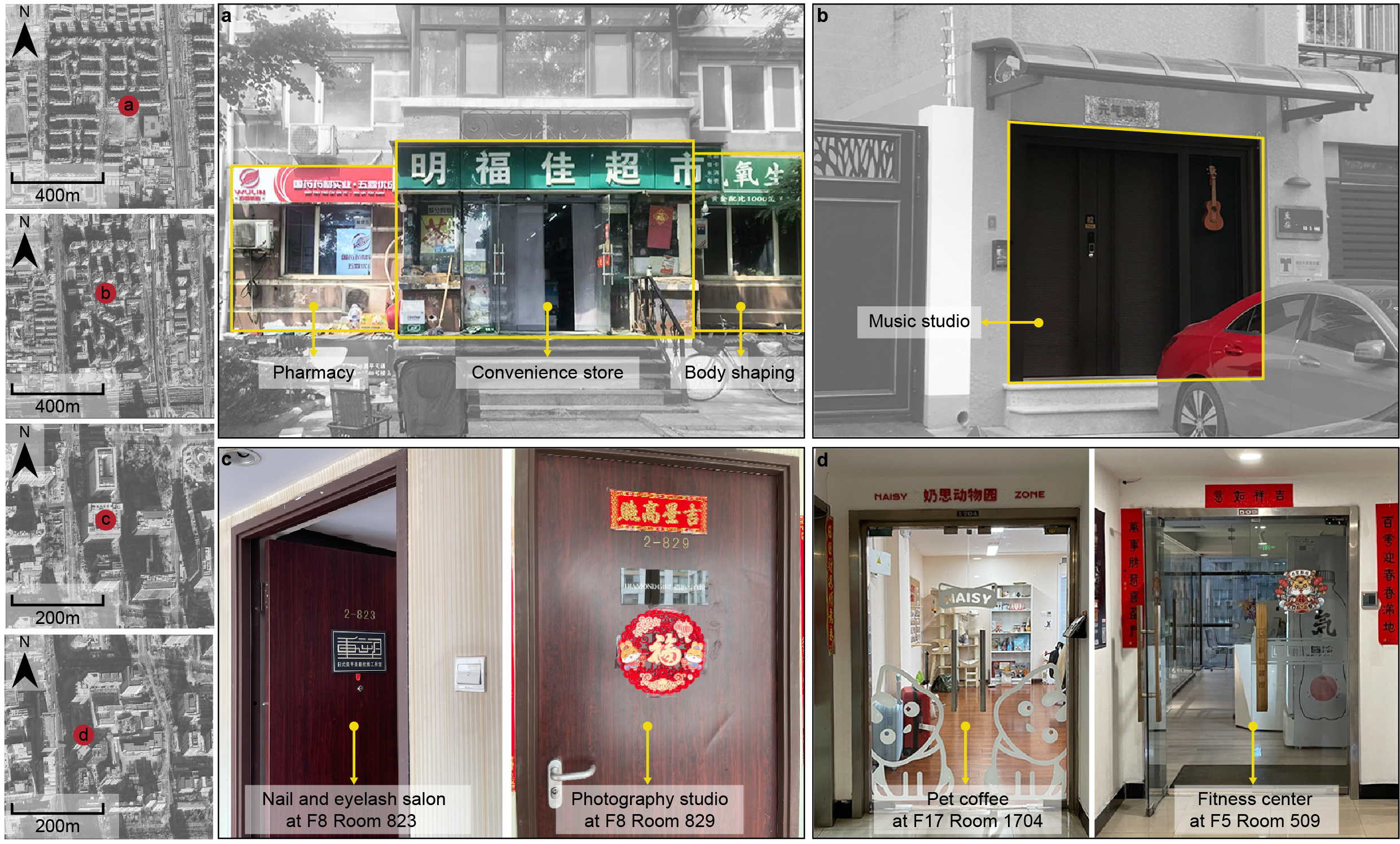How Are China’s Urban Commercial Spaces Being Reshaped in the Digital Era
Published in Arts & Humanities and Business & Management
The Hidden Growth of Non-Street-Facing and Non-Ground-Floor Shops
Over the past decade, China’s urban commercial landscape has undergone a quiet but profound transformation. As researchers studying urban morphology and retail geography, we set out to investigate how digital platforms like Dazhong-Dianping (China’s leading review platform) are reshaping where—and how—businesses operate. Our findings, based on data from 287 Chinese cities, reveal a noticeable trend: shops are expanding horizontally into street block interiors and vertically across building upper floors, less relying on traditional street-facing storefronts and ground-floor spaces.

Emerging horizontal and vertical expansions of commercial establishments. a, A single retail unit within a residential community shared by or subdivided into several smaller shops. b, A residential house repurposed for commercial use. c, Shops established within office buildings. d, Shops situated within residential apartments. Satellite images © 2024 Google, Airbus.
This shift challenges long-standing urban theories about retail location and visibility. In this blog post, we’ll share key insights from our study, discuss their implications for urban planning, and reflect on what this means for the future of cities in the digital era.
Key Findings
Our research tracked commercial establishments from 2015 to 2023, capturing changes before and after the COVID-19 pandemic. Here’s what we discovered:
- Steady Expansion Inward and Upward: The proportion of non-street-facing (NSF) shops grew from 33.44% (2015) to 47.09% (2023). Non-ground-floor (NGF) shops rose from 6.63% to 9.88% in the same period. Notably, this growth accelerated post-COVID, even as the total number of physical stores declined.
- Experiential Sectors Lead the Trend: Businesses offering immersive experiences, like yoga studios, escape rooms, and beauty salons, were most likely to adopt NSF/NGF locations. These sectors rely less on street visibility and more on digital word-of-mouth (eWoM) and platform-based discovery.
- Higher-Tier Cities Adapt Faster: Megacities (e.g., Beijing and Shanghai) saw earlier and more pronounced shifts, while lower-tier cities followed at a slower pace. This suggests that digital infrastructure and consumer behavior play critical roles in driving spatial change.
Why Is This Happening?
We suggest three potential drivers behind this transformation:
- Digital Platforms Reduce Reliance on Physical Visibility: Apps like Dazhong-Dianping and delivery services (e.g., Meituan, me) allow businesses to attract customers without prime street-facing locations. A café hidden on the third floor of a residential building can thrive if it has strong online reviews.
- Rent Gaps Make Inner Spaces More Attractive: Street-facing and ground-floor spaces command premium rents. By moving inward or upward, businesses cut costs while maintaining profitability—a trend seen globally with "dark kitchens" and "ghost stores."
- Post-COVID Digital Acceleration: COVID-19 normalized digital ordering and cost-saving measures, speeding the move to hidden commercial spaces - a trend many businesses maintained post-pandemic.
Implications for Urban Planners and Policymakers
Our findings have critical implications for how cities are planned and governed:
- Rethinking Mixed-Use Development: This expansion shows the potential of bottom-up horizontal and vertical mixed-use development, while the blending of commercial, residential, and office spaces calls for more nuanced zoning policies and precision governance.
- Addressing Street-Level Vacancies: Our documented rise of NSF and NGF shops coexists with previous studies’ omnichannel retailers’ main street presence, creating a new vacancy geography where secondary areas may face particular challenges. This demands nuanced urban responses beyond blanket vacancy solutions.
- Balancing Regulation and Innovation: While digital platforms enable flexibility, unregulated commercial-residential mixing can lead to conflicts. Clear guidelines are needed to protect residents while fostering economic innovation.
Final thoughts
The digital era isn’t killing physical retail—it’s redistributing it. Our research shows that businesses are adapting by embracing less visible but more sustainable locations. For urban scholars, this underscores the need to revisit classic theories of agglomeration and accessibility in the digital era. For policymakers, it highlights the urgency of crafting adaptive, forward-looking regulations.
As cities continue evolving, one thing is clear: the future of urban commerce lies not just on the streets, but within the hidden layers of our buildings.
Follow the Topic
-
Nature Cities

This journal aims to deepen and integrate basic and applied understanding of the character and dynamics of cities, including their roles, impacts and influences — past, present and future.





Please sign in or register for FREE
If you are a registered user on Research Communities by Springer Nature, please sign in